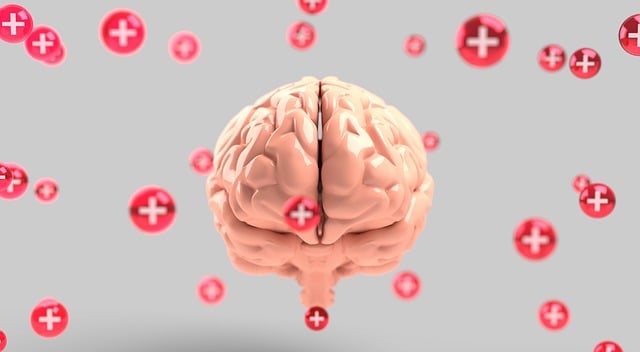Northglenn Adolescent and Teen Therapy (NAT) prioritizes safety through comprehensive risk assessment and harm minimization strategies. They tailor Stress Management Workshops based on past trauma, mental health states, and environmental factors, integrating evidence-based practices. Their approach addresses academic pressures, peer dynamics, and identity formation challenges unique to adolescents and teens. NAT uses techniques like confidence boosting and stigma reduction to build resilience and promote open communication. Regular plan reviews, staff training, and data analysis ensure the therapy center maintains secure environments and positive outcomes for their young clients.
In the realm of Northglenn Adolescent and Teen Therapy (NATT), risk assessment and harm minimization planning are paramount for delivering safe, effective treatment. This comprehensive guide explores fundamental principles, unique risks faced by adolescents, and practical strategies to mitigate them. We delve into creating tailored risk management plans, emphasizing ongoing implementation, monitoring, and updates to ensure the best outcomes for NATT clients. By understanding these processes, therapists can foster a nurturing environment that promotes healing and growth.
- Understanding Risk Assessment: A Foundation for Safe Practice
- Identifying and Evaluating Risks Specific to Adolescents and Teens
- Harm Minimization Strategies: Practical Approaches for Therapy
- Creating a Comprehensive Risk Management Plan for Northglenn Adolescent and Teen Therapy
- Implementation, Monitoring, and Updating the Risk Assessment and Harm Minimization Plan
Understanding Risk Assessment: A Foundation for Safe Practice

Risk assessment forms the bedrock upon which safe practices are built, especially in therapeutic settings like Northglenn Adolescent and Teen Therapy. It involves a thorough analysis of potential hazards and evaluating their likelihood and potential impact to implement effective harm minimization strategies. By systematically identifying risks, therapists can create a nurturing environment that supports vulnerable youth.
This foundational process includes scrutinizing various factors such as past traumatic experiences, current mental health states, and environmental influences. Incorporating evidence-based practices and integrating knowledge from Mental Health Awareness workshops, Northglenn Adolescent and Teen Therapy offers tailored Stress Management Workshops to address these concerns. Through proactive harm minimization planning, therapists can ensure the well-being of adolescents and teens, fostering Anxiety Relief and promoting positive outcomes.
Identifying and Evaluating Risks Specific to Adolescents and Teens

Identifying and evaluating risks specific to adolescents and teens involves a nuanced understanding of their unique developmental stage and associated challenges. Northglenn Adolescent and Teen Therapy professionals recognize that this demographic often faces pressures related to academic expectations, peer relationships, and forming their identity—all of which can contribute to heightened stress levels. For instance, the growing awareness and acceptance of mental illness among teens have led to increased help-seeking behaviors, yet they also face unique barriers such as stigma reduction efforts and the need for tailored interventions.
Evaluating these risks requires a comprehensive approach that considers not just individual symptoms but also broader social factors. Encouraging self-care routine development for better mental health is one strategy, fostering compassion cultivation practices among teens can significantly enhance their resilience. By addressing these issues proactively, Northglenn Adolescent and Teen Therapy aims to equip young individuals with the tools they need to navigate life’s challenges effectively while minimizing potential harms.
Harm Minimization Strategies: Practical Approaches for Therapy

Harm Minimization Strategies play a pivotal role in Northglenn Adolescent and Teen Therapy, focusing on practical approaches to ensure the well-being and resilience of young individuals. One key strategy is Confidence Boosting techniques, which empower teens by providing them with tools to navigate challenges and build self-esteem. Therapists can employ various methods, such as positive reinforcement, goal setting, and success-focused conversations, to encourage clients’ strengths and achievements.
Additionally, addressing Mental Illness Stigma Reduction Efforts is essential in creating a supportive environment. Therapists should actively work towards fostering understanding and empathy by educating both the teen and their support systems about mental health conditions. This includes normalizing discussions around mental well-being, promoting open communication, and integrating Risk Management Planning for Mental Health Professionals to ensure safe and effective therapy practices. These strategies collectively contribute to a more inclusive and supportive therapeutic journey tailored to the unique needs of adolescents and teens.
Creating a Comprehensive Risk Management Plan for Northglenn Adolescent and Teen Therapy

Creating a comprehensive risk management plan is an essential step for Northglenn Adolescent and Teen Therapy to ensure the safety and well-being of their young clients. This involves a thorough evaluation of potential risks within the therapy environment, including identifying vulnerable populations and assessing existing safety protocols. By implementing a structured plan, therapists can effectively navigate and mitigate risks, fostering a secure space for adolescents to explore their emotions.
The strategy should encompass various elements tailored to Northglenn’s unique needs, such as training staff in crisis intervention techniques, establishing clear communication channels with parents or guardians, and integrating coping skills development activities into therapy sessions. Additionally, promoting emotional well-being through evidence-based practices and encouraging self-esteem improvement can significantly contribute to harm minimization. Regular reviews and updates of this plan are crucial to address emerging challenges and ensure the highest standard of care.
Implementation, Monitoring, and Updating the Risk Assessment and Harm Minimization Plan

Effective risk assessment and harm minimization planning require ongoing attention and adaptation. Once the initial evaluation is complete, the plan must be implemented with careful consideration of resources and responsibilities. Northglenn Adolescent and Teen Therapy, for instance, can facilitate this by assigning dedicated personnel to monitor and review the plan regularly. This involves assessing whether interventions are successfully mitigating risks and achieving desired outcomes. If not, adjustments should be made promptly. The dynamic nature of adolescent development and changing societal trends necessitate regular updates to both the assessment and planning strategies.
Monitoring includes tracking relevant data, such as client feedback, treatment outcomes, and potential new risks. This information feeds into a broader Mental Health Policy Analysis and Advocacy process that informs updates to the harm minimization plan. For instance, emerging research on Mindfulness Meditation techniques could suggest improved coping mechanisms for stress management among teens. Likewise, Burnout Prevention Strategies for Healthcare Providers can help ensure that therapy staff remain equipped to support clients effectively over time. Regular reviews allow for continuous improvement, ensuring the plan remains relevant and effective in addressing evolving mental health concerns.
Risk assessment and harm minimization planning are essential components of providing safe and effective therapy for adolescents and teens in Northglenn. By understanding the unique risks faced by this demographic, therapists can implement tailored strategies to protect clients and foster a supportive environment. The comprehensive risk management plan outlined in this article serves as a guide for Northglenn Adolescent and Teen Therapy professionals, ensuring that each individual’s well-being is prioritized and that potential harms are minimized throughout the therapeutic journey.














